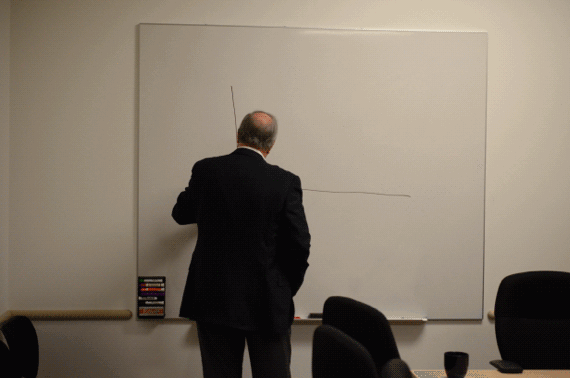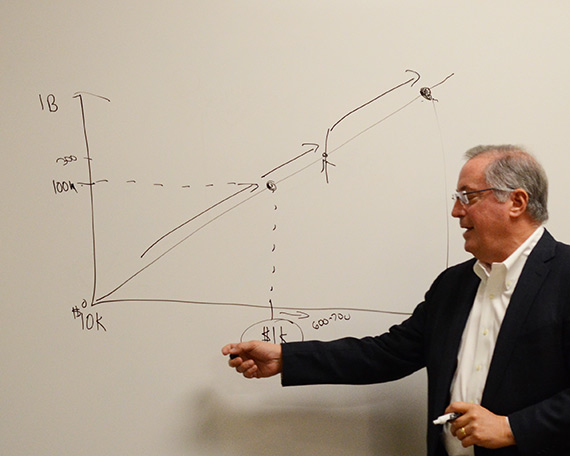Intel CEO Paul Otellini Draws the 'History of the Computer Industry' in 1 Chart
From 2000 units sold at $10,000 a pop to a billion units sold at $100 a piece.

On the Y-axis, we have the number of units sold in a year. On the X-axis, we have the price of the device, beginning with the $10,000 IBM PC at the far left and extending to $100 on the far right. Then, he drew a diagonal line bisecting the axes. As Otellini sketched, he talked through the movements represented in the chart. "By the time the price got to $1000, sort of in the mid-90s, the industry got to 100 million units a year," he said, circling the $1k. "And as PCs continued to come down in price, they got to be an average price of 600 or 700 dollars and we got up to 300 million units." He traced the line up to his diagonal line and drew an arrow pointing to a dot on the line. "You are here," he said. "I don't mean just phones, but mainstream computing is a billlion units at $100. That's where we're headed."
"What I told our guys is that we rode all the way up through here, but what we needed to do was very different to get to [a billion units]... You have to be able to build chips for $10 and sell a lot of them."
"This is what I had to draw to get Intel to start thinking about ultracheap," Otellini concluded.
"How well do you think Intel is thinking about ultracheap?" I asked.
"Oh they got it now," he said, to the laughter of the press relations crew with us. "I did this in '05, so it's [been more than] seven years now. They got it as of about two years ago. Everybody in the company has got it now, but it took a while to move the machine."
Much of the rest of the story is dedicated to understanding precisely why the machine was so hard to move: the culture, the semiconductor industry conditions, etc. In a nutshell, in 2001, 80-90 percent of Intel's business was desktops for corporations with a plurality of revenue from the Americas. The world changed really, really quickly, and Intel's product cycles are more than three years long because it takes a long time to build a chip from the ground up.
So, what this chart shows, I think, is that you may be able to fault Otellini for not pulling the right levers within the vast Intel system, but you can't say he failed to see the ultracheap world coming.
